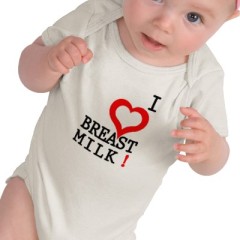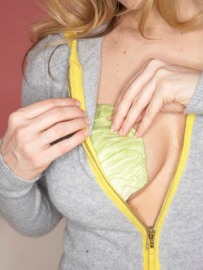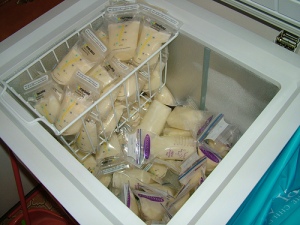 There are several reasons why breastfeeding mothers need to express their milk:
There are several reasons why breastfeeding mothers need to express their milk:
1. They are working moms who are away from their babies during the day
2. The babies sleep soundly through the night (like mine) so the breasts get full in the night
3. The babies can’t latch on properly (tongue-tied, inverted nipples etc) so they get breastmilk in the bottle
4. To increase or maintain breastmilk production rate – ideally we should empty both breasts after each feeding
5. To relieve breast engorgement
We can express breastmilk by hand (the marmet method), using manual or battery/electricity operated breastpump. I never got the gist of hand-expressing, so I chose to use a breastpump instead. During the first few months when the production rate was still low I used a manual breastpump, then during the peak period of breastmilk production I used an electric breastpump which gave more milk at a faster time. Working moms often chose double pump that can express both breasts at one go, very useful if you have limited time to express at the office. There are also pumps with massage feature to induce the let-down reflex. Nowadays there are myriad of options regarding breastpump types and brands, you’ll need to do a thorough research before deciding to purchase one. Or you can just receive one as a gift and stick with it, like I did.
Whenever you need to get out of the house, do so with empty breasts. I found it’s better to prepare early and took some time expressing before going out, as something might come up to delay my coming back home in time for nursing or expressing. The best way is just to nurse Jojo until he’s full, then express the rest of the breastmilk out before leaving the house.
 Every now and then I would get sudden breast engorgement. I could be eating something that really boost the milk production (in my case: durian, ice cream, steamed peanuts, seafood), or I could oversleep and woke up with engorged breasts. Breast engorgement was really no fun. My maid advised to just massage the breasts heartlessly until the milk pushed through the clogged ducts, but the pain was just too much for me. I tried massaging with baby oil, hot-and-cold compress, nothing works. Then I found out about cabbage, and I was an instant convert. It may sound really weird, but cabbage really works in relieving clogged milk ducts. Get a fresh white cabbage (chilled is best), pound the leaves with a pestle to release their juice before putting one or two leaves on each breast (you might want to cut holes for the nipples otherwise the smell may be too much for your baby). Leave for 30 minutes to an hour, remove the leaves and wash your breasts before trying again to express the milk by hand or with a breastpump. It worked like magic for me! The cabbage cure is known all over the world for generations, I wonder who was the first woman who decided to try putting cabbage leaves on her engorged breasts…
Every now and then I would get sudden breast engorgement. I could be eating something that really boost the milk production (in my case: durian, ice cream, steamed peanuts, seafood), or I could oversleep and woke up with engorged breasts. Breast engorgement was really no fun. My maid advised to just massage the breasts heartlessly until the milk pushed through the clogged ducts, but the pain was just too much for me. I tried massaging with baby oil, hot-and-cold compress, nothing works. Then I found out about cabbage, and I was an instant convert. It may sound really weird, but cabbage really works in relieving clogged milk ducts. Get a fresh white cabbage (chilled is best), pound the leaves with a pestle to release their juice before putting one or two leaves on each breast (you might want to cut holes for the nipples otherwise the smell may be too much for your baby). Leave for 30 minutes to an hour, remove the leaves and wash your breasts before trying again to express the milk by hand or with a breastpump. It worked like magic for me! The cabbage cure is known all over the world for generations, I wonder who was the first woman who decided to try putting cabbage leaves on her engorged breasts…
Managing your EBM (Expressed Breast Milk)
After expressing, store the EBM in a sterile container (cup or pouch or bottle) and make sure it’s properly closed. It’s recommended to mark the date and time of expressing as the baby should consume the oldest EBM first, following the FIFO (First In, First Out) method. Working mothers often carry cooler bags to store the EBM on their way home from the office. The shelf life of EBM are as follows:
- At room temperature: up to four hours
- Inside the fridge: up to 48 hours
- Frozen: up to 6 months
It’s OK to mix the EBM from a few expressing sessions in one day, as long as they are kept at the same temperature. For example, you get 100 ml at 9AM. Put it on the fridge. On 5PM you get another 100 ml, also put this on the fridge for about an hour until it has completely cooled down and reached the same temperature as the 9AM one. Then you can mix the two together in one container and freeze it.
To consume the EBM, take it out of the freezer and let it thaw inside the fridge for a while. The best way is to use a food warmer specially for EBM, do not use high temperature as it may kill the nutrients and antibodies. If you don’t have a food warmer, simply let the container steep in a bowl of warm water – be careful not to let the EBM mix with the water. Only swirl slowly, vigorous shaking or stirring can destroy the antibodies inside the EBM. Put several drops on your palm to make sure the EBM is in the right temperature before giving it with your baby. Also check the appearance, if it changed color, density or consistency, the fatty layer separated and won’t diffuse with the rest of the EBM, then throw it away.
You can also travel with EBM, in may case was so that hubby can feed Jojo while we’re out of the house. He could sit at Starbucks feeding Jojo while I continued shopping! We bought an insulated bag just for this purpose. At first we foolishly brought the frozen EBM then asked for hot water to heat it up during feeding time, but often we were too late and Jojo would be screaming furiously while we swirled the still partially frozen container. It’s better to thaw it in advance, pour into ready-to-use sterile bottle in a chilled condition and put inside the insulated bag. It’s faster to heat a chilled bottle instead of a frozen one! Bring two small bottles instead of one huge bottle if you’re planning to be out for a long time, as baby’s saliva can reduce the shelf life of a partially consumed bottle. If you’re going out near feeding time, you can bring a warm bottle inside the insulated bag and immediately feed the baby whenever he/she is hungry.

you have that many in the freezer mi?